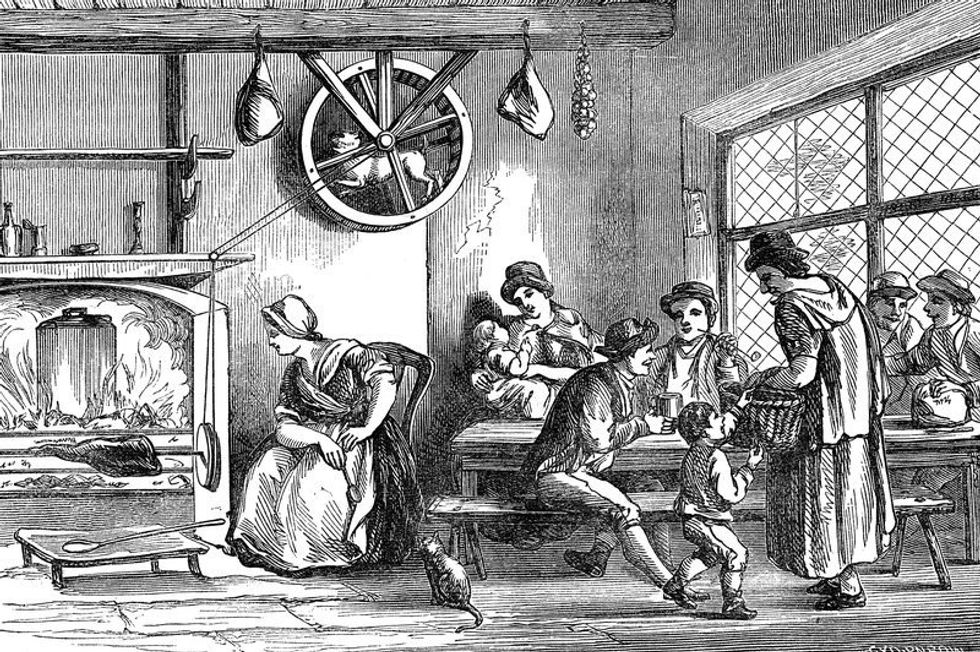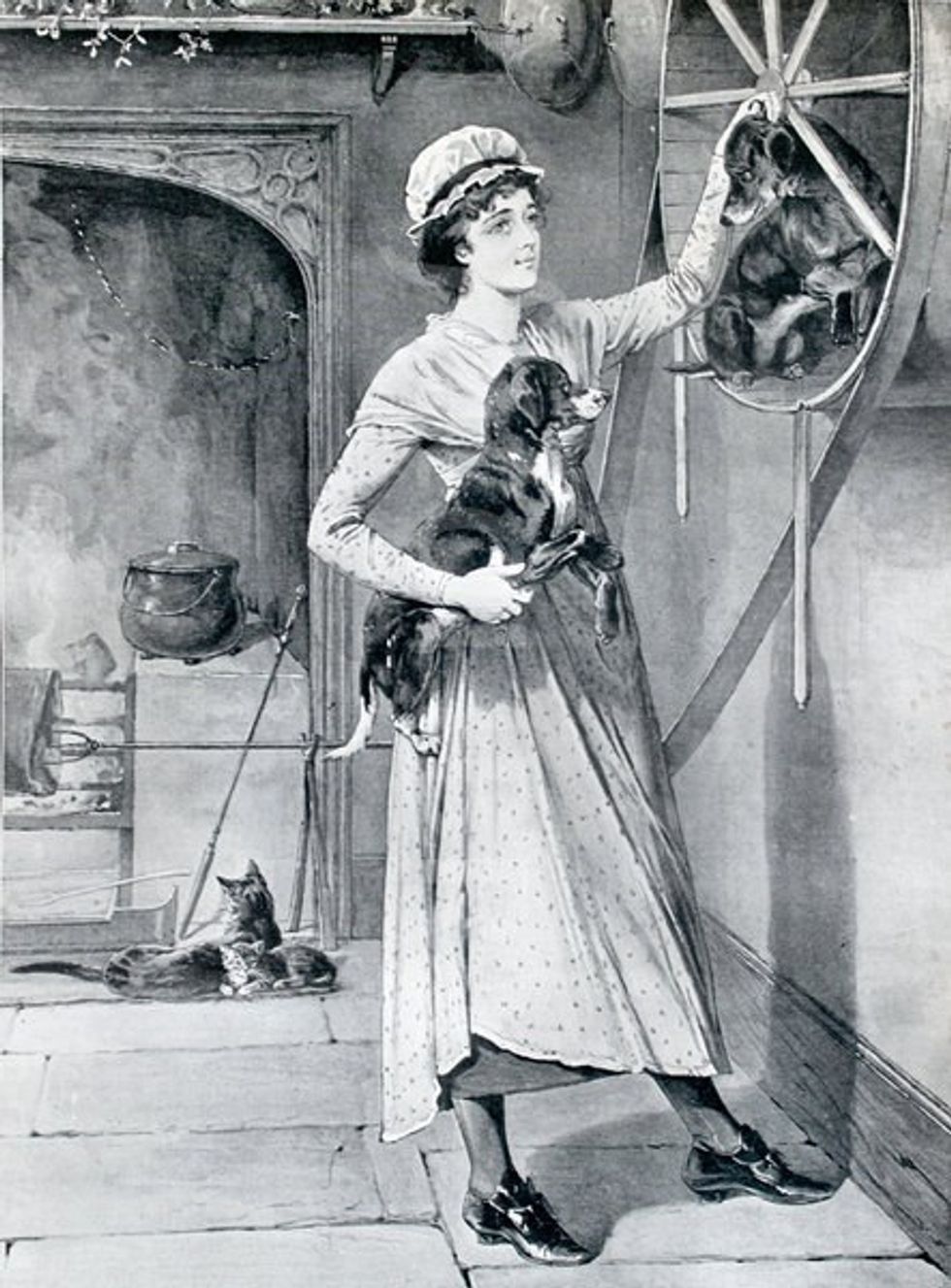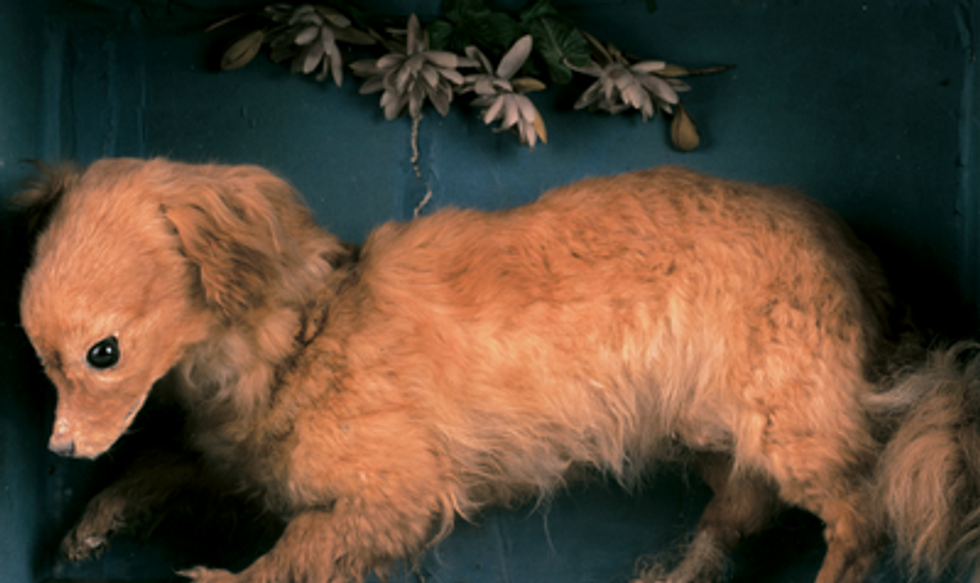Historically, dogs have held all kinds of jobs: Hunting, herding, heating the beds of the elite. One odd little dog forgotten to history is the turn-spit dog.
As their name implies, these dogs were bred and kept as kitchen dogs. They ran in a wheel to keep the spit turning in the fireplace so the meat would cook evenly. To keep the dogs from overheating, the wheels were placed high on the kitchen wall. Their scientific name is Canis vertigus- literally dizzy-dog!
Turn-spit dogs were a distinct breed of small, low-bodied dogs with short little legs called the Vernepator Cur. They originated in Britain and are documented as far back as the 1576 book Of English Dogs. By the mid 1850s, the invention of automaton roasting-jacks put the little dogs out of business. Unfortunately, they were so common and disregarded, they were not formally kept track of as a breed and are now extinct. There is some debate as to whether the Vernepator Cur descended from terriers, or a relative of the modern day Welsh Corgi.
Here you can see a woman switching out the two turn-spit dogs.
To keep the meat spinning, they were kept in groups of two and switched back and forth. If the dog stopped running, typically coals were thrown at their feet.
Interestingly, there are several recorded cases of the dogs being so adapted to their routine that if no one came to relieve them at their usual stopping time, they would jump out of the wheel and fetch the other dog on their own.
While they weren't working in the kitchen, the dogs were often used as foot warmers. There is an old legend about turn-spit dogs brought to church as foot warmers–when the Bishop said the line, "It was then that Ezekiel saw the wheel..." the dogs, recognizing the word "wheel" ran from the church.
While this gives a pretty grim outlook on the lives turn-spit dogs lived, there is some evidence that their role in the family varied throughout the several hundred years they worked in the kitchen. In some eras they were seen as kitchen tools, no more a pet than a barn animal. In other times, they were viewed as members of the household who earned their keep. During these times, they were favored over other household dogs and often given long walks.
In fact, Queen Victoria kept retired turn-spit dogs as pets!
"Whiskey" the only known example of a taxidermied turn-spit dog. He can be seen on display at the Abergavenny Museum in Wales.























